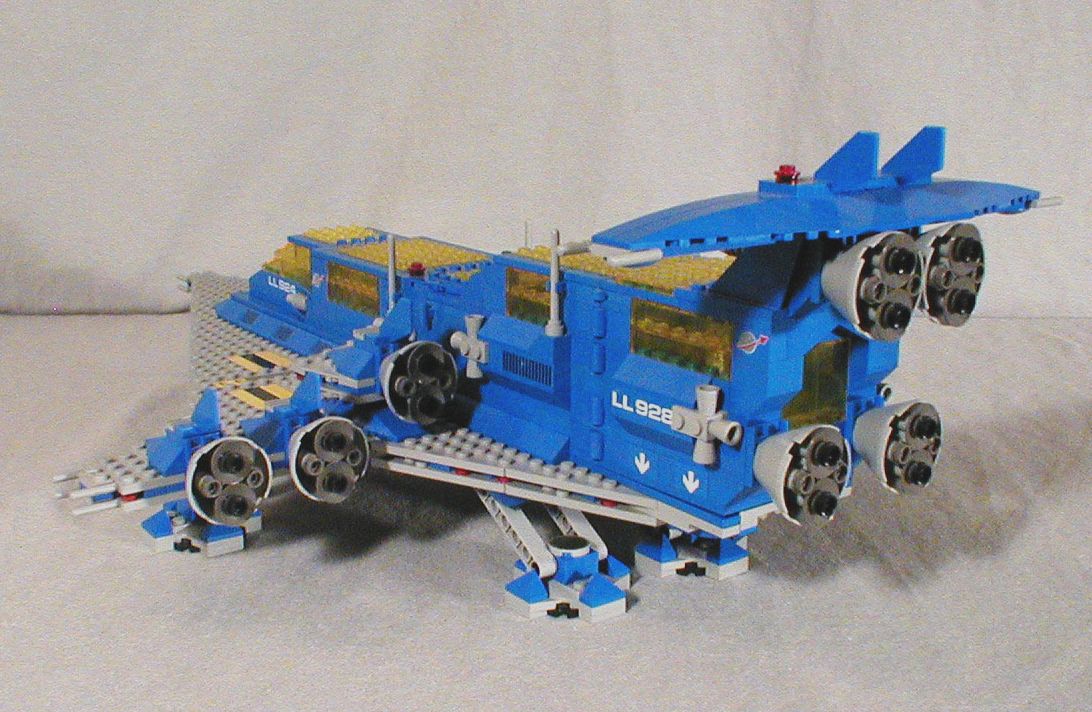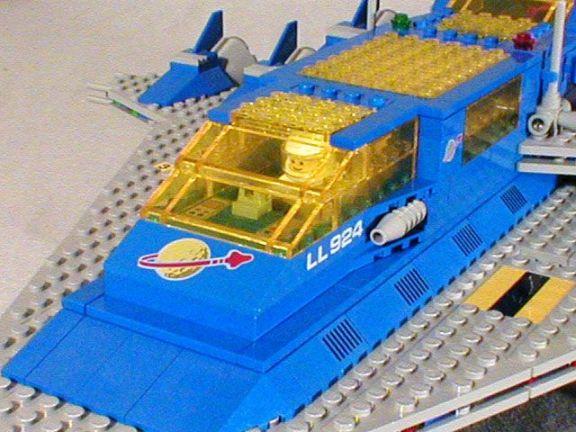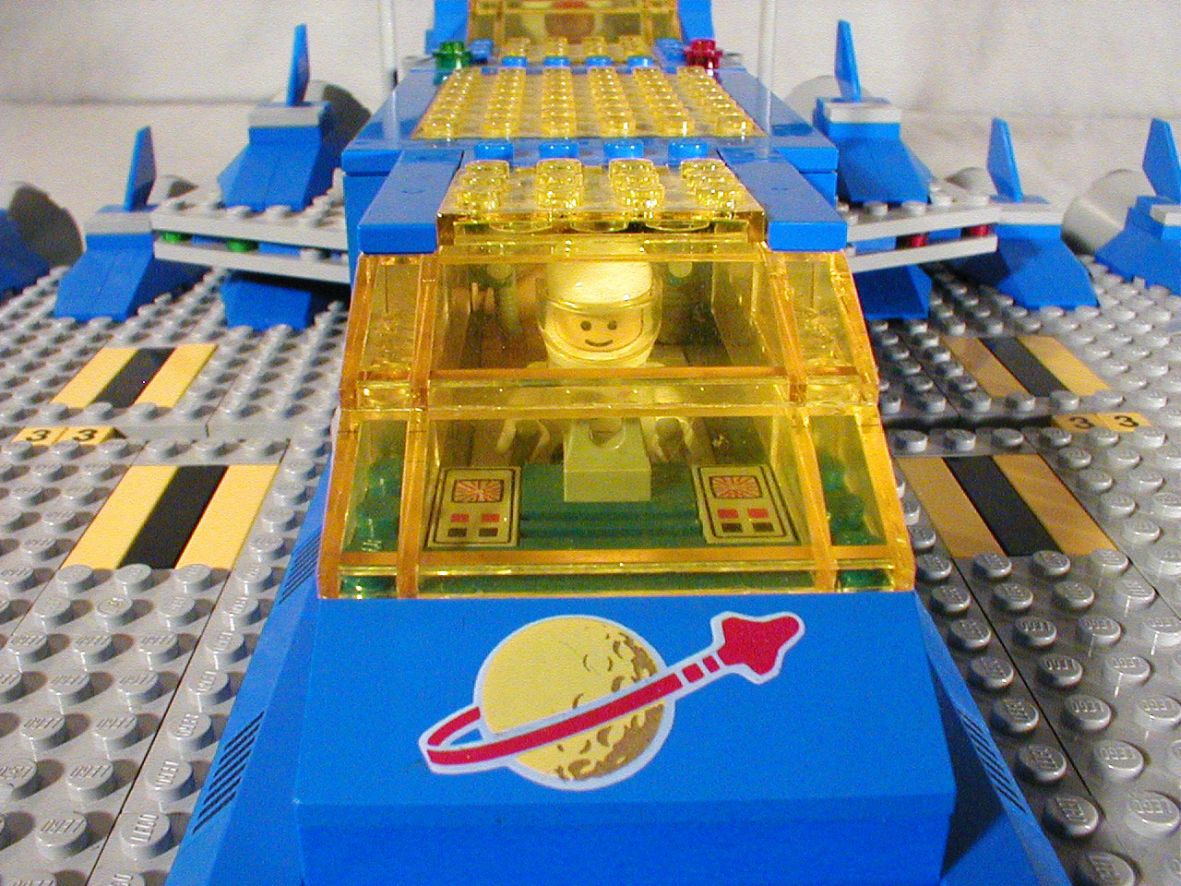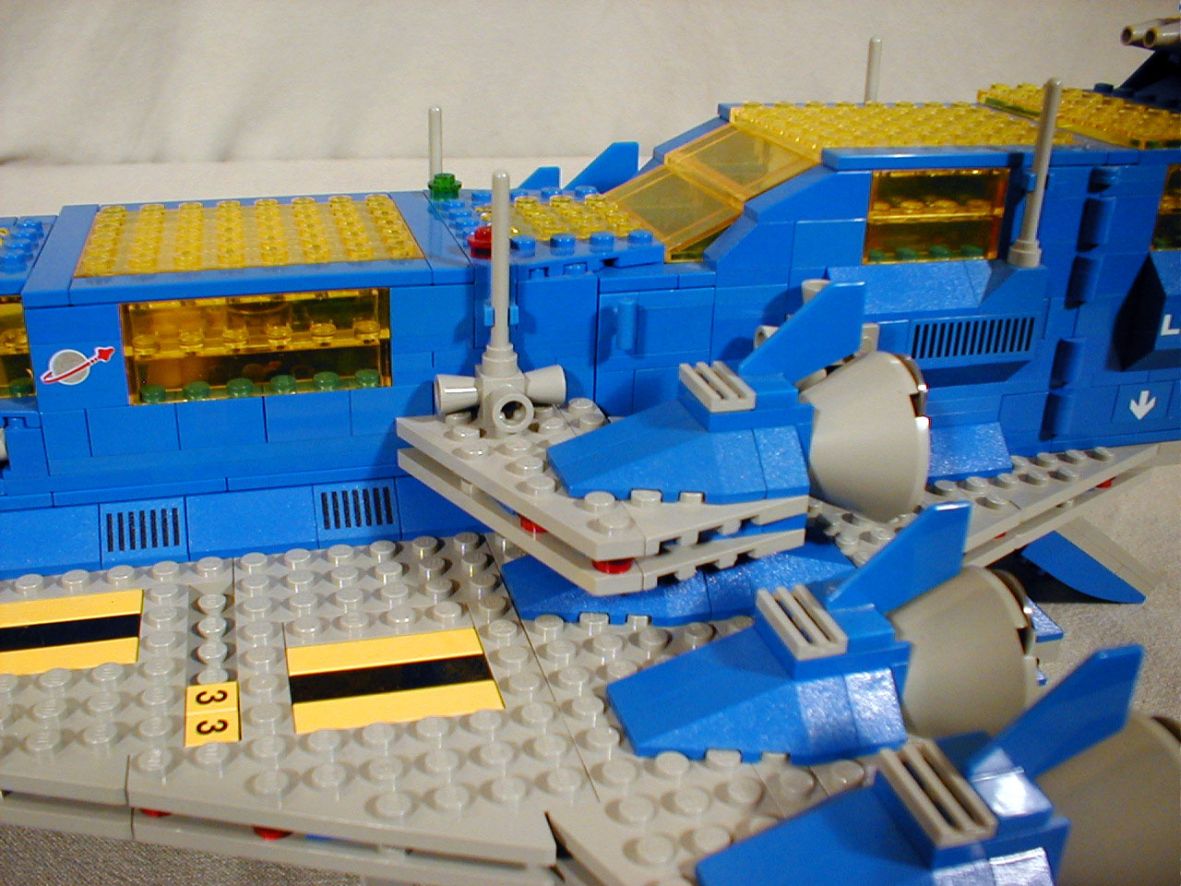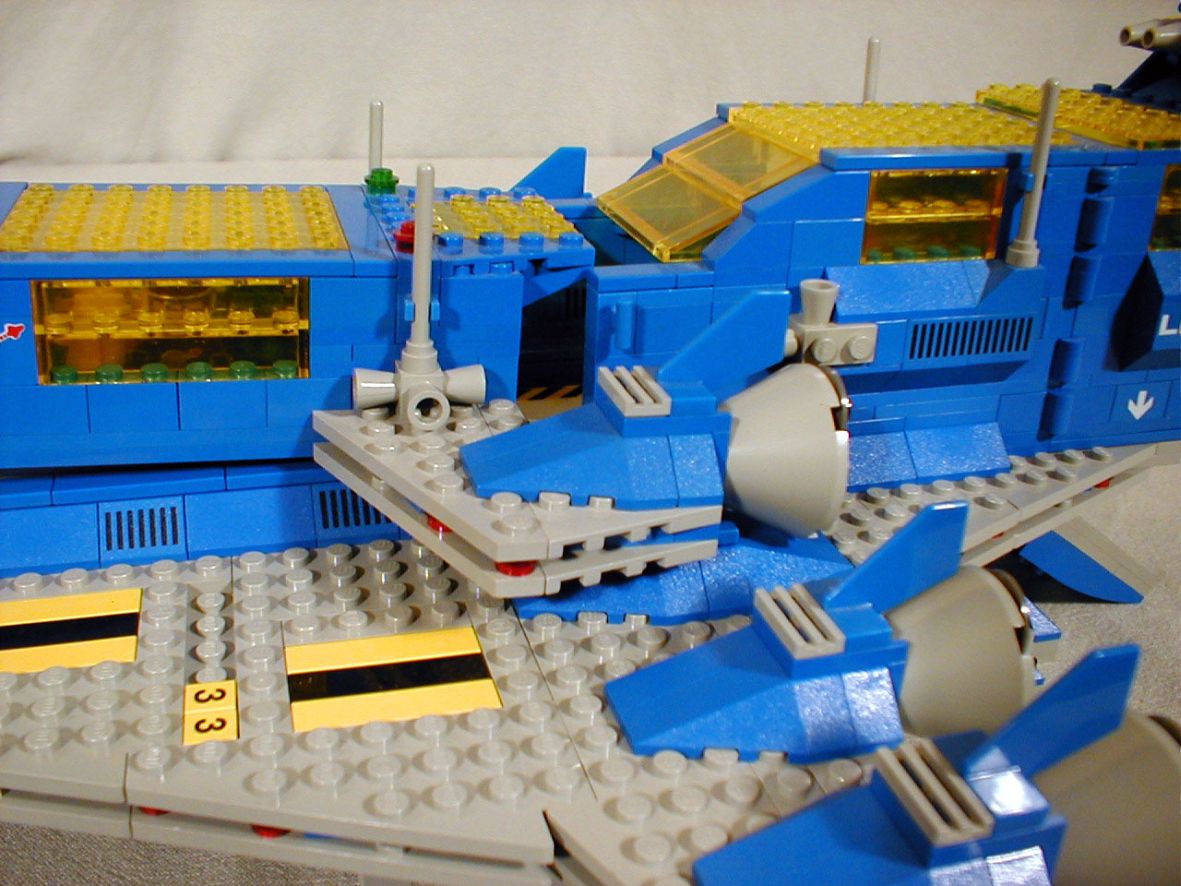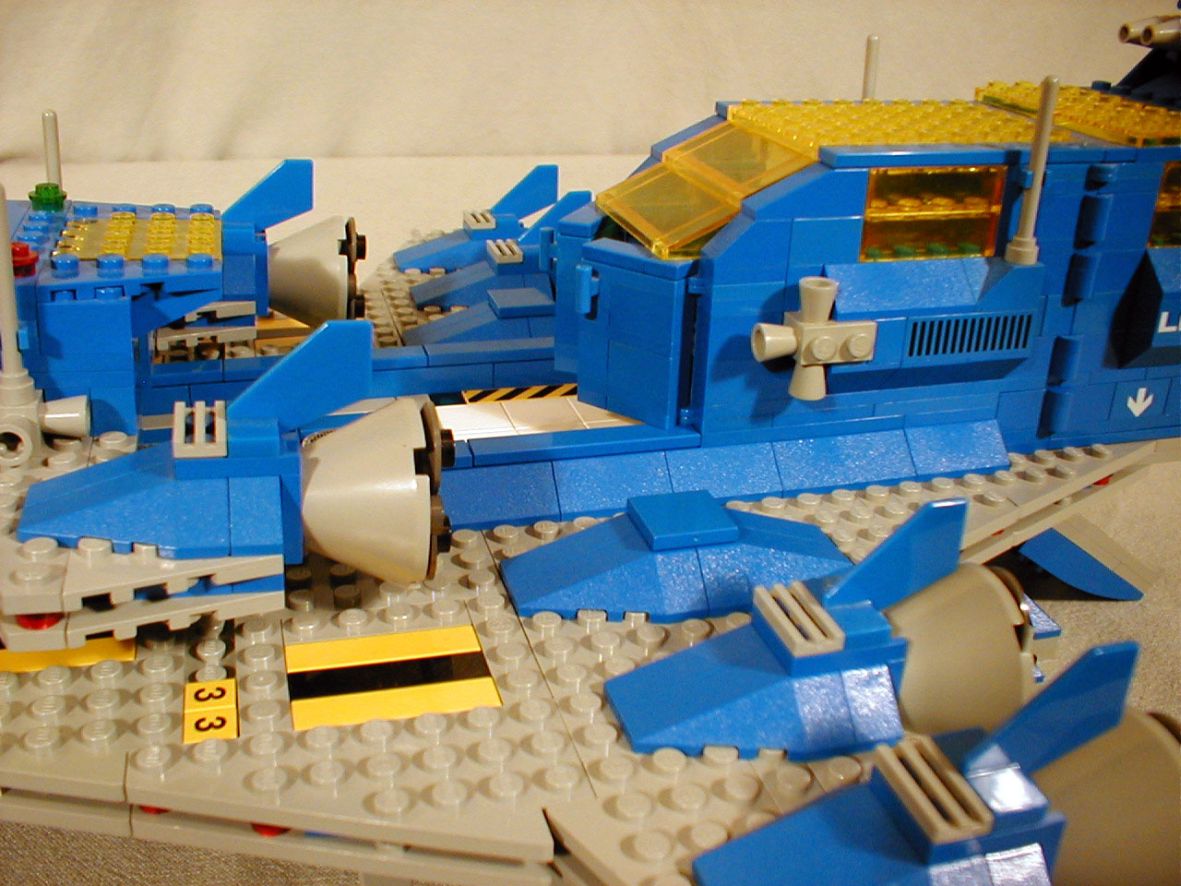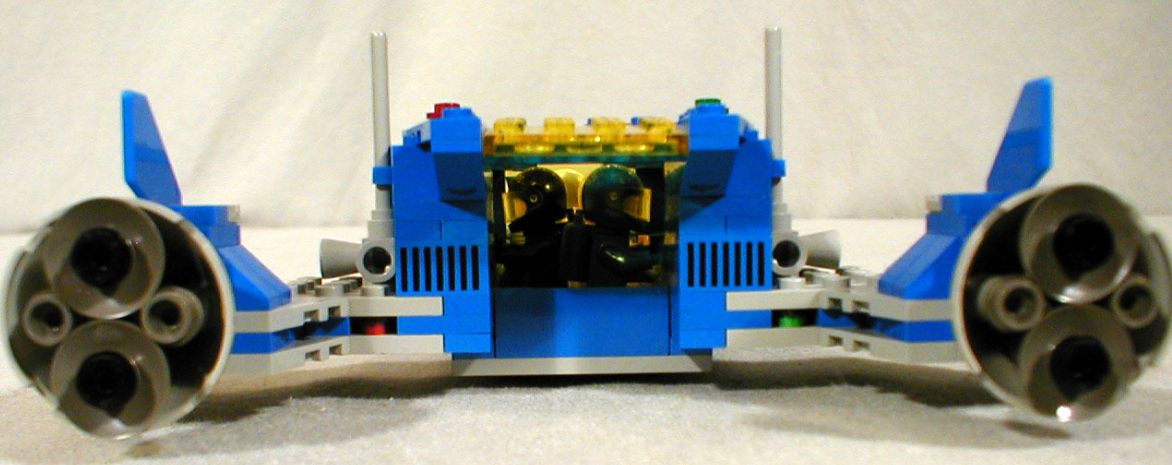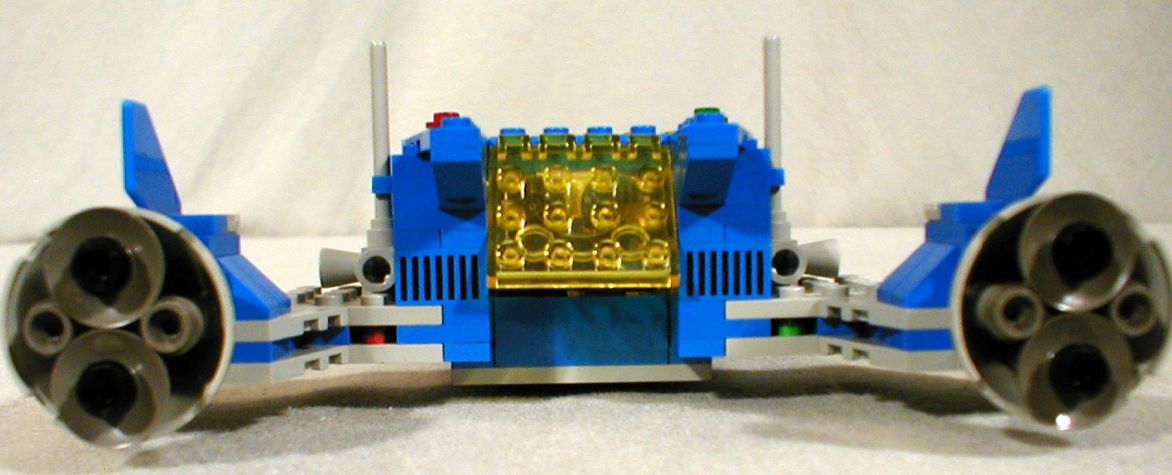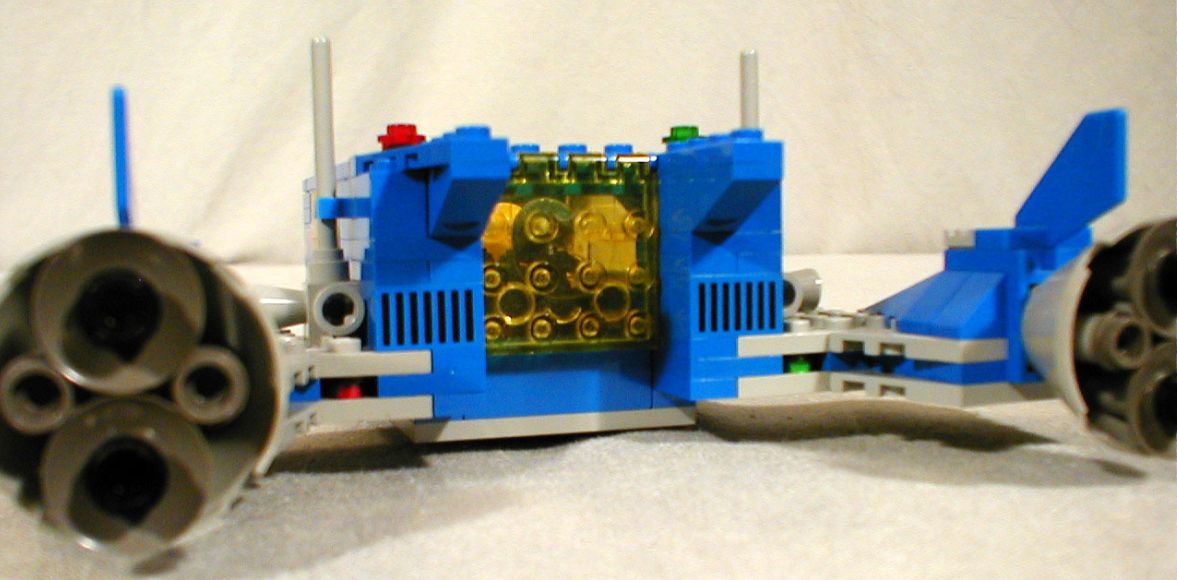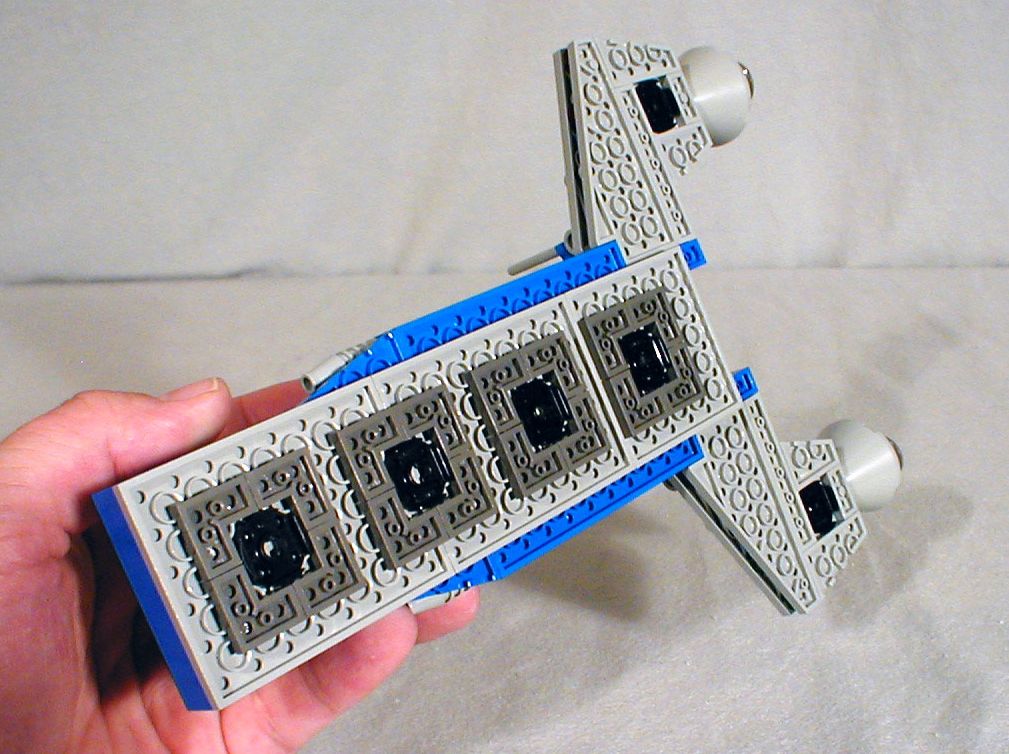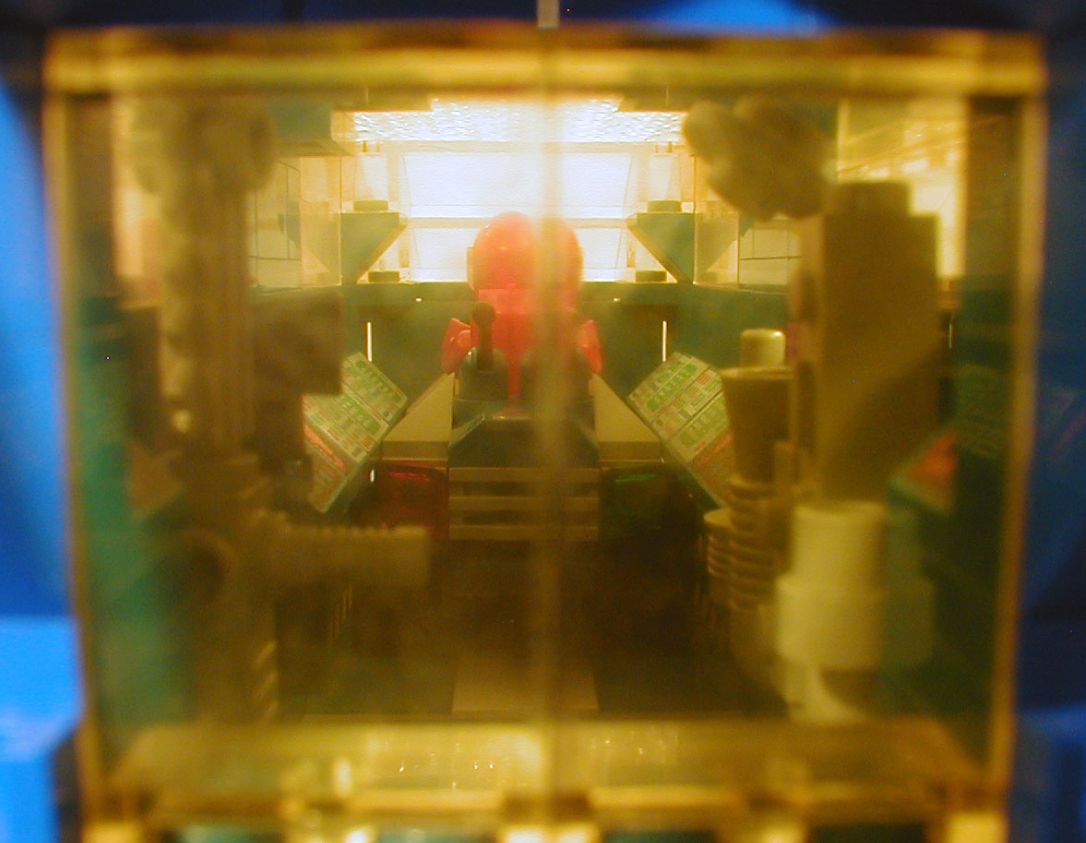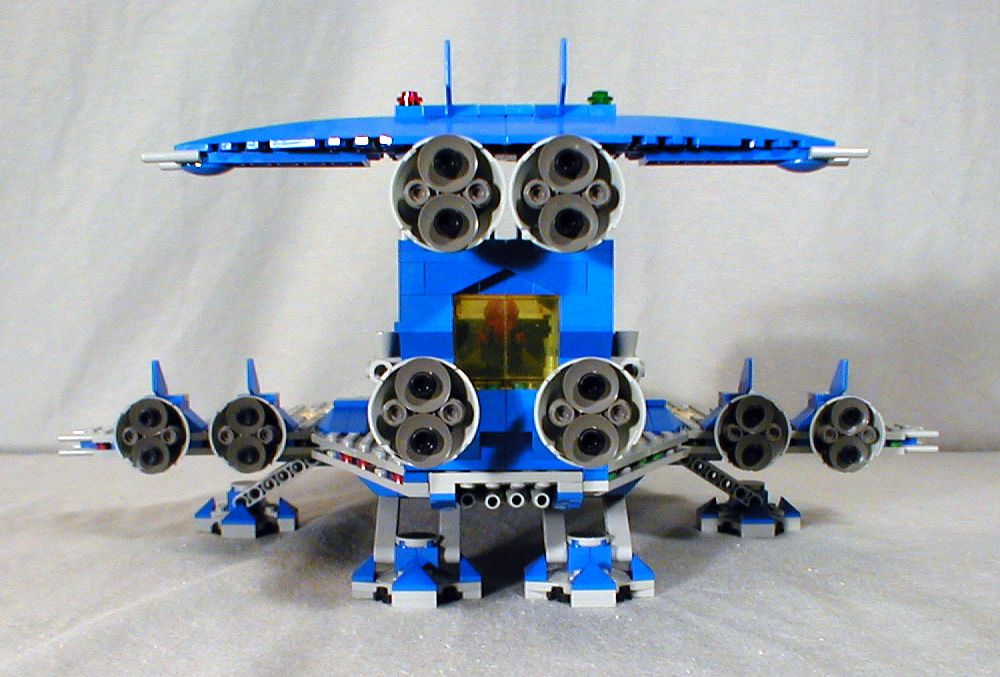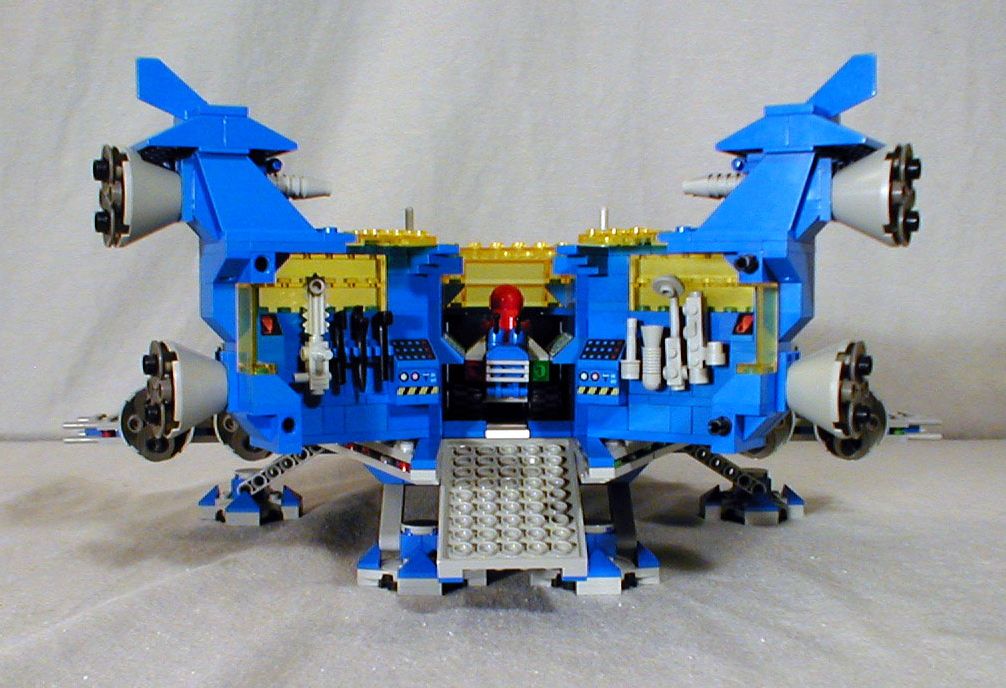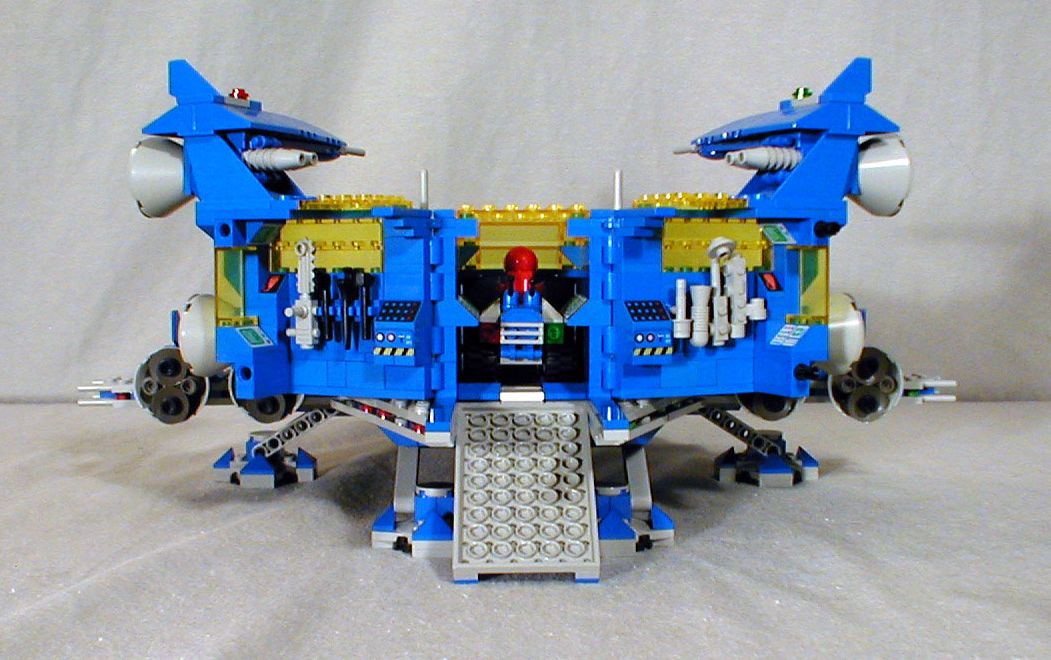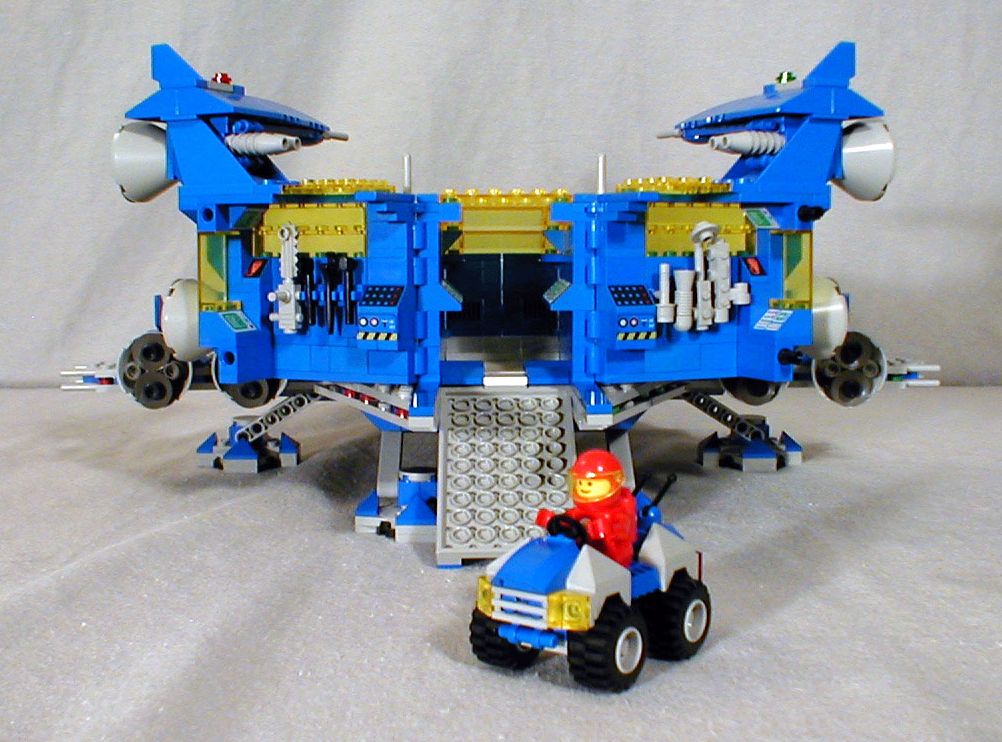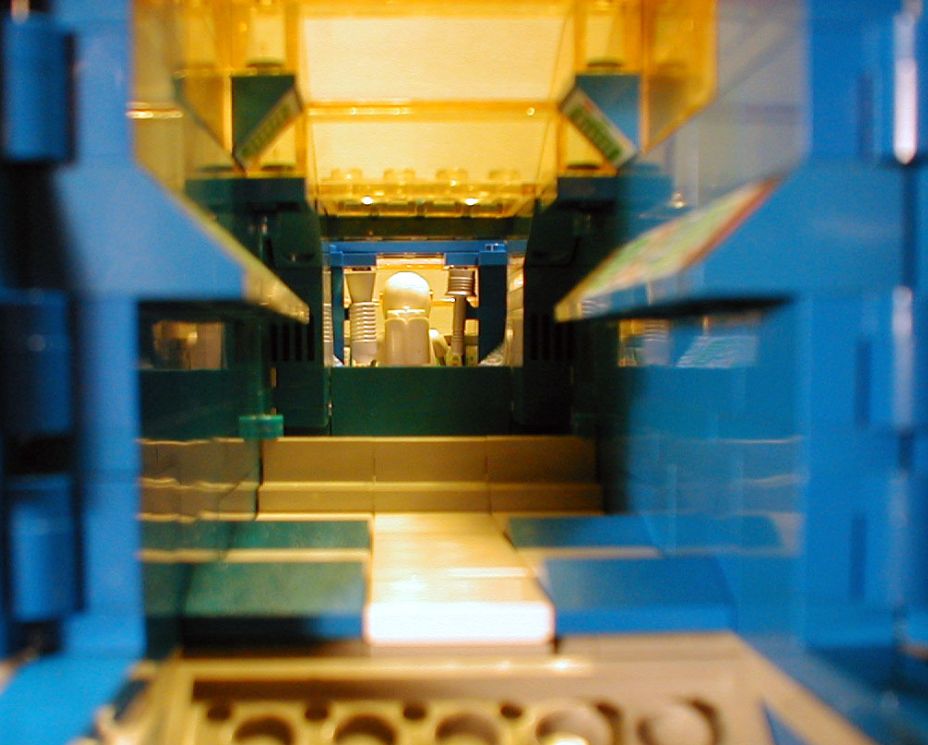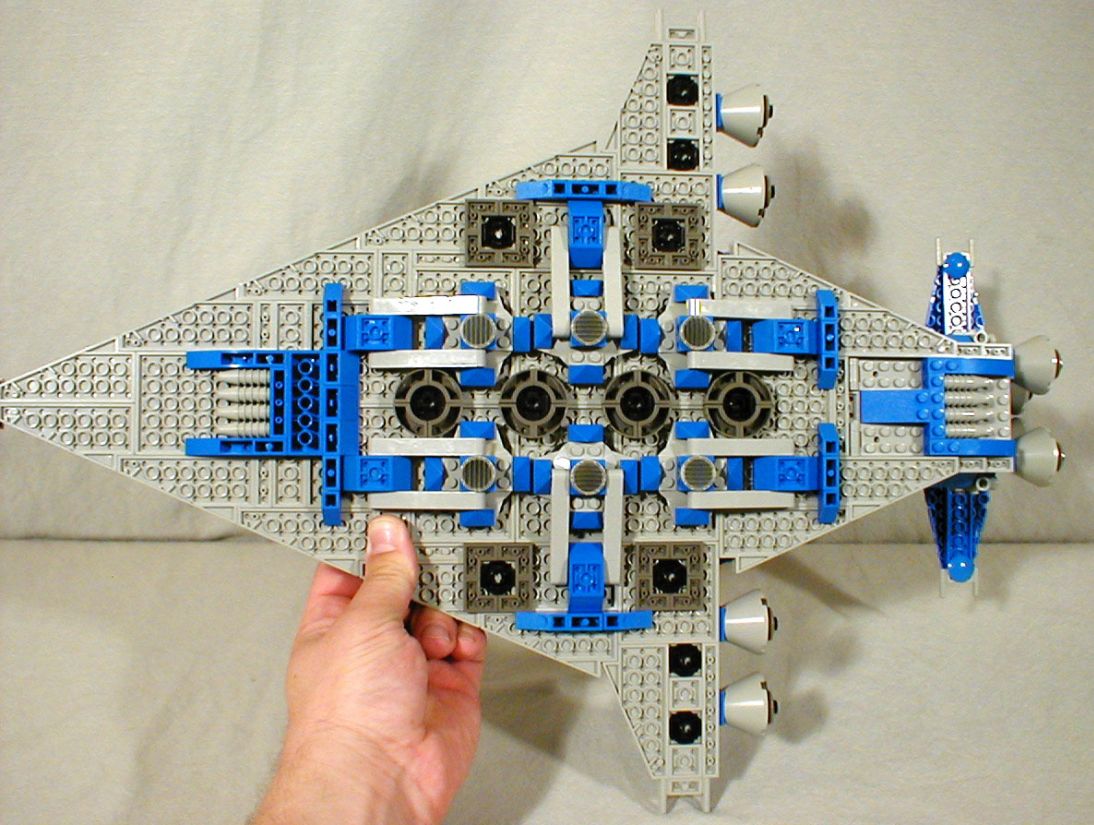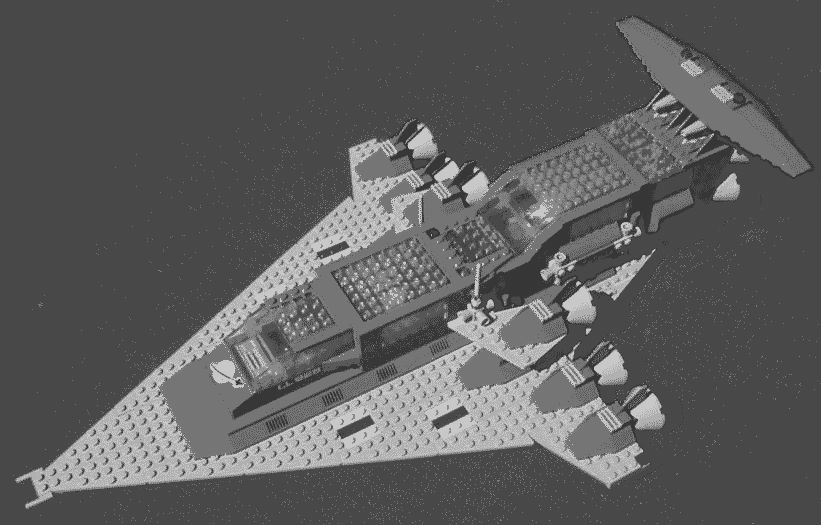
I have to plead guilty to a huge and terrible admission; I'm a monstrously lazy tease! The above photograph was taken by me and posted on Lugnet almost 2 years before I finally got around to taking some decent pictures of the completed MOC and making this page! The fun part is that if you look closely, you can see some of the small ways the design changed in that time. I keep working on an MOC until no amount of tinkering results in any changes. That's when I feel that I am done.
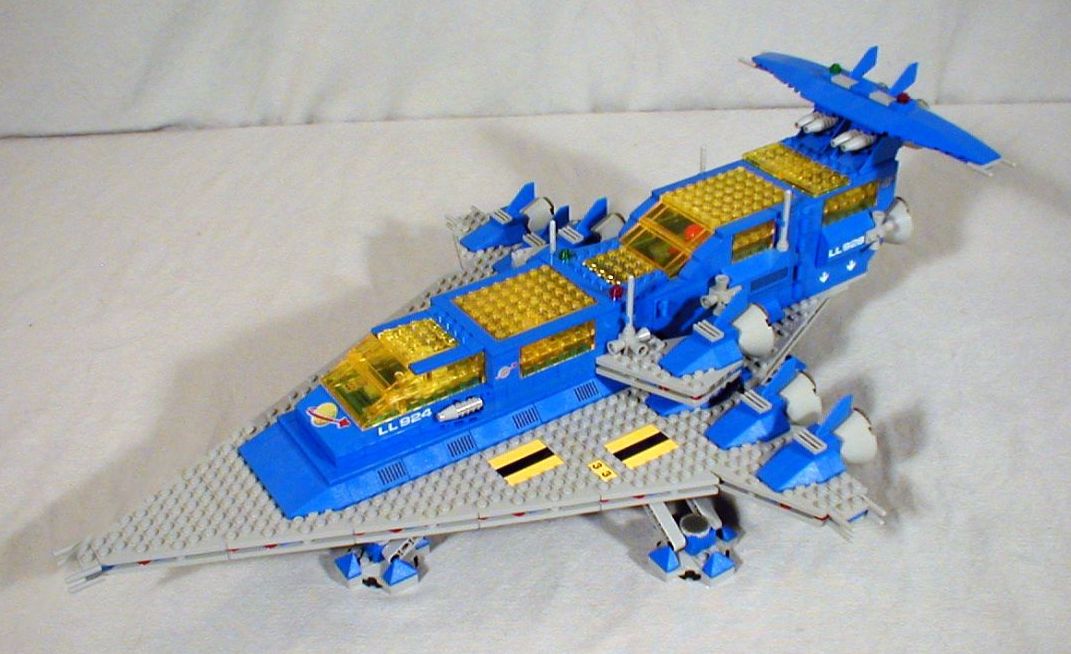
Classic Space has always been my favorite theme as it is the one I remember first. I recall countless hours imagining and building vast empires and enacting epic battles with the first few sets I had. The #928 Galaxy Explorer is the holy grail of Classic Space sets for a variety of reasons, and I wanted to pay homage the theme by making a sort or kitbash/hybrid of that set and the original #487 Space Cruiser.
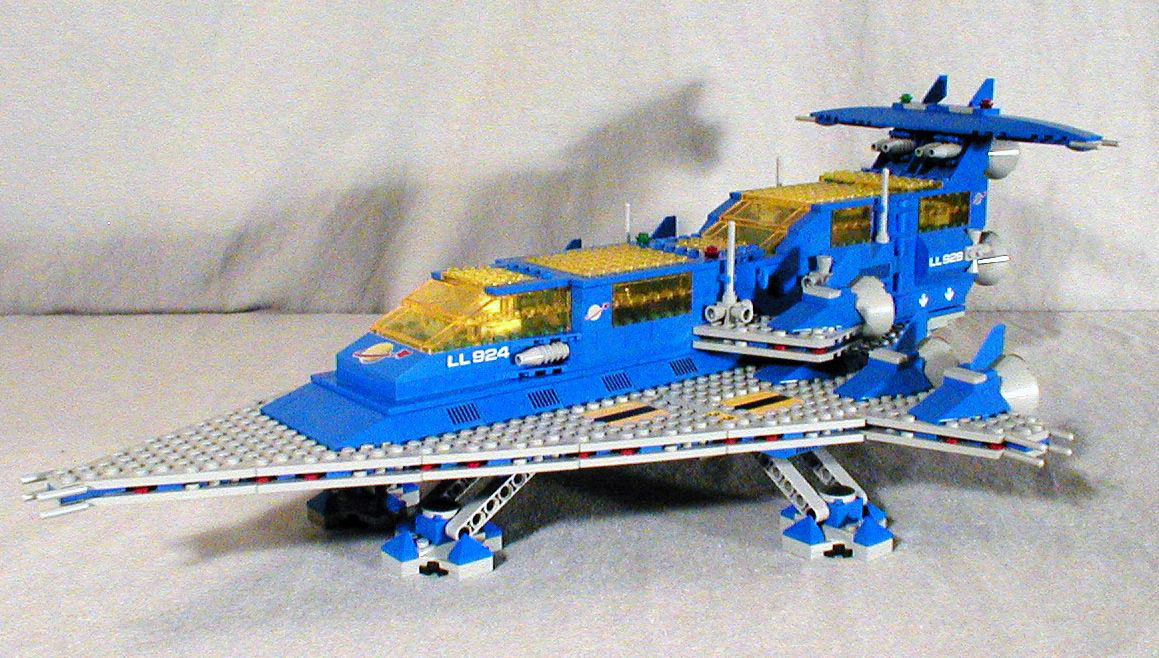
These grainy pictures will be replaced quite soon. I had a dinosaur of a digital camera, but Photoshop is helped to smooth things a bit. I've made a few changes to the design since these pictures were taken, and I now have a MUCH better camera to work with. Stay tuned!
I spent a LOT of time on getting the landing gear the way I wanted. I know that many Spacers scrutinize this function quite keenly, so I wanted something that I thought would please their high standards. You can see how they fold up in the last picture on this page.
